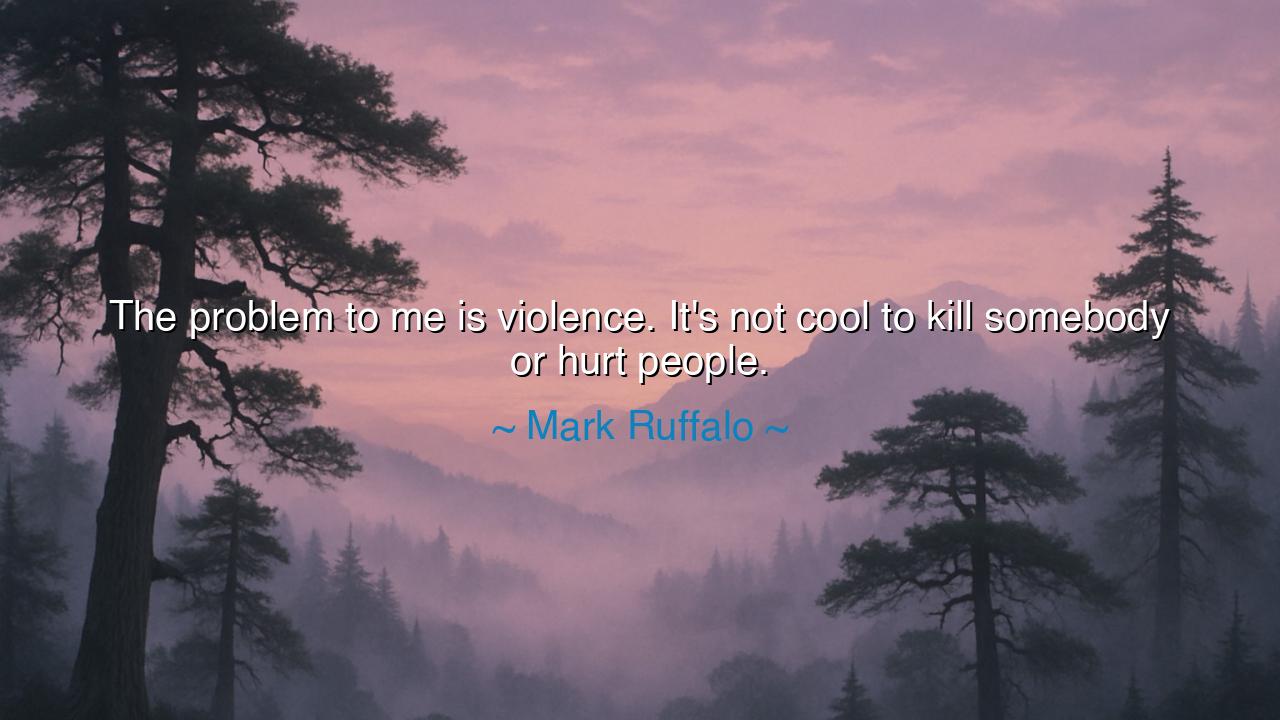
The problem to me is violence. It's not cool to kill somebody or






On the Folly of Violence and the Strength of Compassion
When Mark Ruffalo said, “The problem to me is violence. It’s not cool to kill somebody or hurt people,” his words carried a simplicity so direct, it cut through the noise of our age. In their clarity lies a truth ancient and eternal: that violence, though it may parade as power, is the mark not of strength, but of brokenness. Ruffalo, a man who has portrayed heroes and monsters alike, speaks here not as an actor but as a human being — one who has glimpsed the cost of cruelty, both in the stories we tell and in the world we inhabit. His message is not political, but moral; not abstract, but profoundly human.
The ancients would have understood him well. For in every age, from the dawn of civilization, humanity has wrestled with its own capacity for destruction. The sword, the spear, the gun — each born from the same illusion: that through force, we may achieve peace. Yet history, in all its tragic repetition, shows us the futility of this dream. Ruffalo’s words remind us that the true problem is not the weapon, but the heart that wields it. To kill, to harm, to destroy — these acts do not elevate us; they diminish us. They sever the sacred thread that binds one soul to another, the thread that makes civilization possible.
Consider the teachings of Mahatma Gandhi, who faced one of the most powerful empires of his time with nothing but his conviction. The British, armed with guns and laws, sought to control millions through fear. Gandhi, armed only with nonviolence, brought the empire to its knees. His weapon was truth, his armor was compassion. He proved that peaceful resistance can move mountains that violence cannot. When Ruffalo says that it is “not cool to hurt people,” he speaks in the same spirit as Gandhi — rejecting the glorification of aggression that our cultures too often celebrate. For even today, many confuse dominance with courage, and vengeance with justice.
To call violence “not cool” may sound modest, but in truth, it is revolutionary. In a world saturated with images of destruction — in films, games, and daily headlines — violence has been romanticized as thrilling, inevitable, even heroic. Yet, Ruffalo challenges this illusion. He asks us to see violence not as a display of power, but as a confession of weakness — the last refuge of those who have lost faith in empathy. For it takes far more strength to restrain one’s hand than to strike with it. The true warrior is not the one who conquers others, but the one who conquers himself.
History offers countless examples of this higher strength. When Nelson Mandela emerged from twenty-seven years of imprisonment, he did not call for revenge against those who had oppressed him. Instead, he sought reconciliation. His forgiveness healed a wounded nation and astonished the world. In that moment, he embodied the truth behind Ruffalo’s words — that peace is not passive, but powerful; that compassion is not weakness, but courage in its purest form. Violence can destroy an enemy, but only love can turn an enemy into a brother.
And yet, the allure of violence persists. It tempts humanity with its false promise of control — the illusion that by hurting others, we can restore balance or right a wrong. But every act of harm births new wounds, rippling outward across families, nations, and generations. Ruffalo’s statement is a call to break this cycle — to reject the notion that killing or hurting can ever be “cool.” For in glorifying violence, we corrupt the very essence of what it means to be human. The only lasting victory is one won through understanding, through patience, through the humble strength of forgiveness.
The lesson, then, is both timeless and urgent: choose compassion over cruelty, empathy over aggression. Do not let the world convince you that anger is mightier than kindness. When you are wronged, do not answer with vengeance; when you are provoked, answer with clarity, not fury. To live without violence is not to live without struggle — it is to fight a nobler battle, one that begins within the heart. Each act of restraint, each gesture of mercy, each choice to heal instead of harm — these are the quiet victories that shape the destiny of humankind.
Thus, in the words of Mark Ruffalo, we find not a simple opinion, but a moral compass — a guiding light in an age of chaos. Let us remember that to harm is easy, but to love is divine. The hand that heals is stronger than the hand that strikes; the voice that speaks peace is louder than the roar of war. So, when anger rises and the world urges you to strike back, pause — and recall his truth: violence is not strength, and it is never cool to harm another soul. For only those who master peace within themselves can truly bring peace to the world.






AAdministratorAdministrator
Welcome, honored guests. Please leave a comment, we will respond soon